Introduction :
This article is the first of the series dedicated to the comparative analysis of B2B e-Commerce and B2C e-Commerce.
The objective here is to lay out some of the main existing (or apparent) differences between the B2B and B2C models. The rest of the articles in the series will focus more on the detail of the functional concerned by these differences and in particular on the impact to be taken into account on the choice of solution.
E-COMMERCE CONTEXT TO DATE
A PARTICULAR CONTEXT
Over the past 2 years, the Covid impact has been felt and significantly. In 2021 we see, all sectors combined, an increase of more than 1M French people who have become e-Commerce buyers : this is the largest increase in the number of buyers since 2015… These figures are in fact even stronger than it seems to be due to the disappearance during the crisis of a large part of e-Commerce purchases in the field of services (travel, etc.).
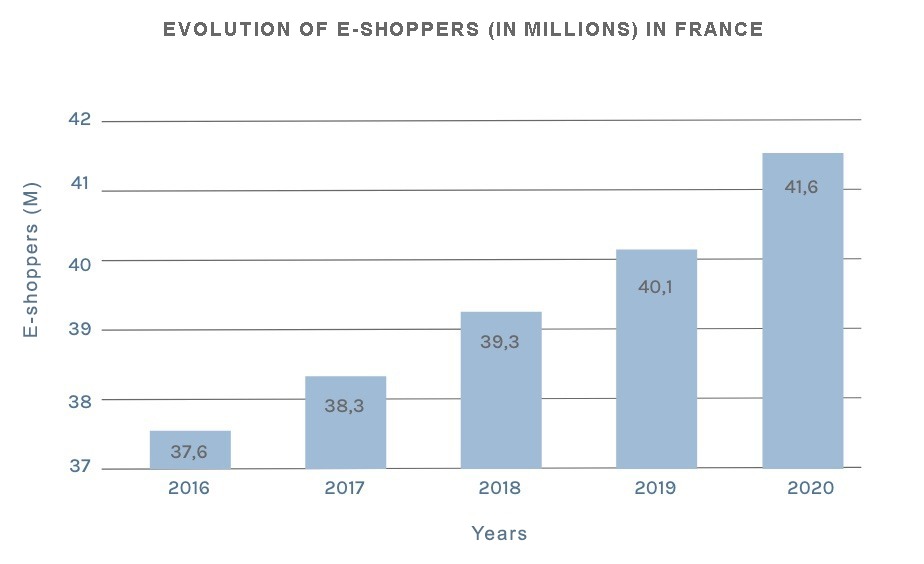
A large proportion (34 %) of the e-Commerce companies surveyed by FEVAD consider or note that the Covid crisis has greatly accelerated the growth of e-Commerce.
STILL 2-DIGIT AND ACCELERATED GROWTH
For many years, e-Commerce, whether B2C or B2B, has been growing steadily.
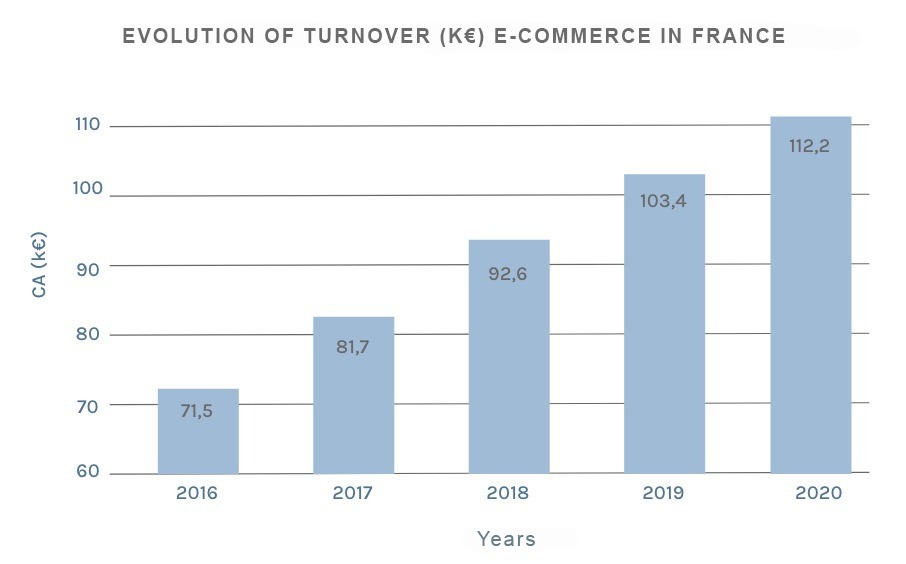
THE EVOLUTION OF B2B E-COMMERCE FURTHER REINFORCED
In this context and although already very strong, the growth of B2B e-Commerce has been further strengthened :
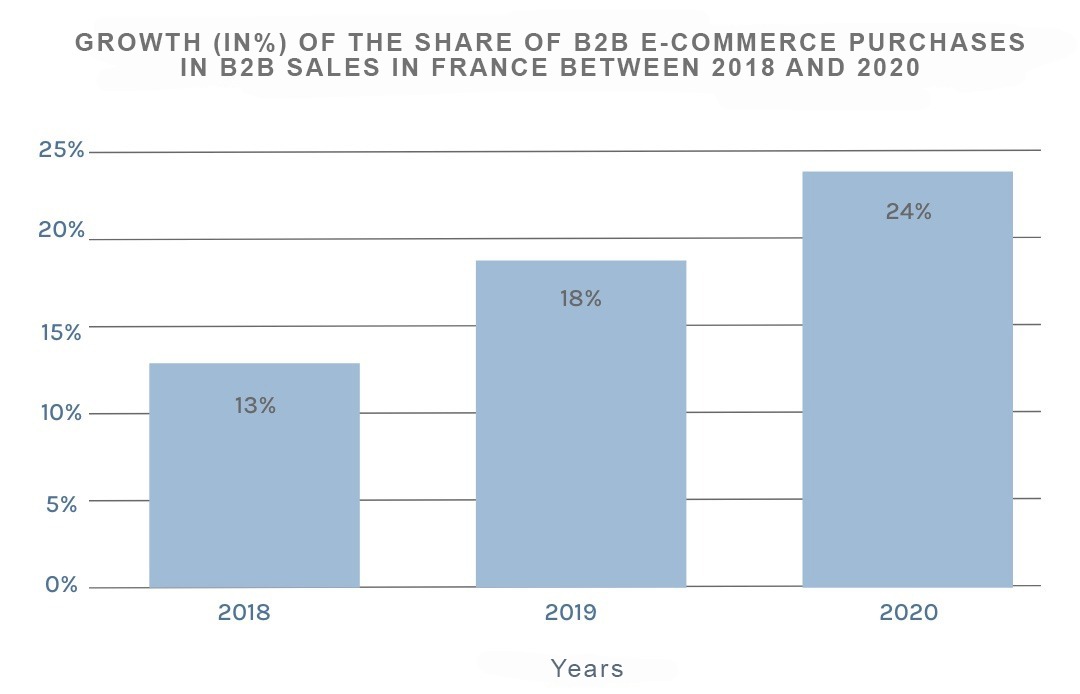
THE DIFFERENT B2C-B2B SALES MODELS / DIFFERENT TYPES OF ACTORS
One can imagine many classifications of e-Commerce sales models between B2C and B2B.
The approach presented here aims above all to illustrate the articles of the serial and to facilitate their understanding.
We will thus distinguish a few major types of models :
- Purely B2C sales : from the smallest e-Commerce site to major brands and large retailers.
- B2B sales (B2C model) : the sales approach is very similar to that of B2C sales with just a few additional features (VAT entry, account payment, end-of-month invoicing) dedicated to B2B customers. The vast majority of features are identical between B2B and B2C as well as the sales strategy and associated marketing. Clients tend to be small businesses.
- Mixed B2C and B2C sales : this type of sale potentially addresses the same B2C customers as for a purely B2C model but also opens up its offer to B2B customers by addressing them in the same way as the B2B sales model described above.
- Distributor / Wholesaler : a purely B2B sales model whose targets are either resellers (in the case of distributors) or companies (in the case of wholesalers) of varying sizes (small to very large).
- Manufacturer : it is interesting to distinguish the case of the manufacturer (who resells mainly in B2B) among the others because it brings specific constraints specific to this typology.
We can also project, in an extremely schematic way of course, a level of functional complexity associated with these different sales models :

VOLUME MANAGEMENT
Volume management is very different on a B2C e-Commerce platform and a B2B platform.
In a simplified way, these differences could be summarized as follows :

Of course, there are many cases that contradict this generalization. However, these comparative orders of magnitude are often verified and necessarily lead to related architectural choices, appropriate choices in the ergonomics of the Back Office, etc.
THE CONCEPT OF RECURRENCE
Still in general terms, we see that the concept of recurring sales is much more developed in B2B than in B2C. Of course, this observation does not take into account specific cases such as very large B2C sites (Amazon, CDiscount, etc.) or sites whose model is precisely based on recurrence (Nespresso, etc.), but nevertheless remains true in the general case.
It can thus be seen that the number of B2B customers is very much lower than that of B2C, but that these customers frequently repurchase on the site : the site is considered to be a “supplier”.

A direct consequence of this observation is that it is necessary in B2B to put in place systems that will allow, for example through fine management of the customer relationship, to maintain and motivate these recurring purchases. This is one of the reasons why the notion of customer service (tools, CRM, additional services, etc.) is a concept that is often strongly developed on a B2B e-Commerce platform.
MARKETPLACE
The subject of marketplaces is vast and just like e-Commerce, its development in B2B continues to grow. By the way, do not hesitate to subscribe to our soap opera dedicated to marketplaces.
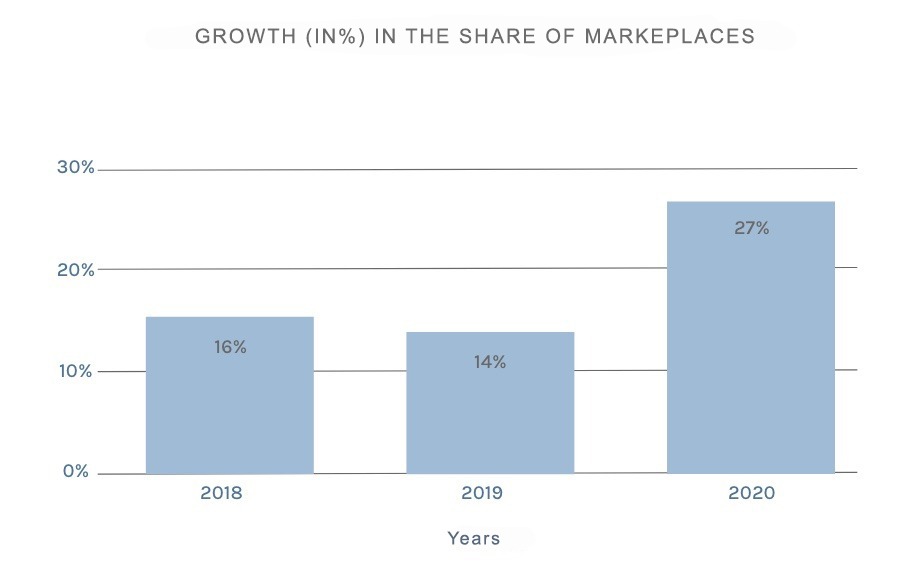
Many marketplaces originally oriented B2C have now also positioned themselves on B2B sales (Amazon Business, FNAC Pro, CDiscount Pro, etc.) and complement the existing offer, which is often vertical (Agriaffaires, Conrad, etc.).
The objective here is not to deal with the subject of marketplaces (which has its own dedicated soap opera) but we can see that in the end, the issues we are looking at today on e-Commerce platforms find their equivalent in marketplace level. These will also address all of the different sales models mentioned above.
SIGNIFICANTLY DIFFERENT COMMUNICATION CHANNELS
The recurring aspect of B2B sales but also the typology of buyers and the reasons for purchases differ significantly between B2C and B2B.
As much as a B2B buyer will expect (or appreciate) to find ergonomics and mechanisms close to those of B2C, he will necessarily need additional tools to address needs that a B2C user will not have.
The same buyer is not necessarily in the same state of mind either when he buys for the needs of his company (very often he knows what he is looking for, for example) than when he buys for his own account in as an individual.
The natural person is indeed the same but his expectations differ : thus the communication channels will follow accordingly (email VS SMS, telephone VS chat…). But as the figures show, these differences in trends tend to decrease :
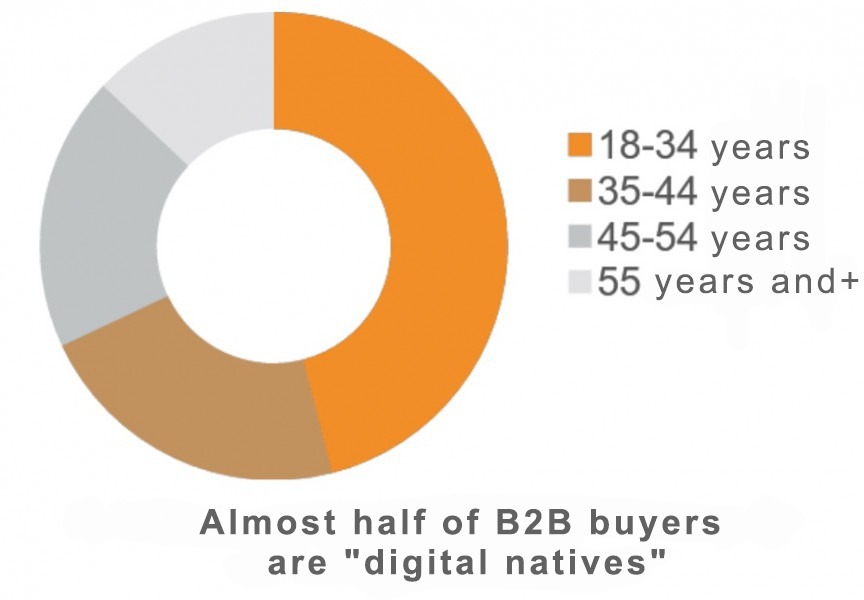
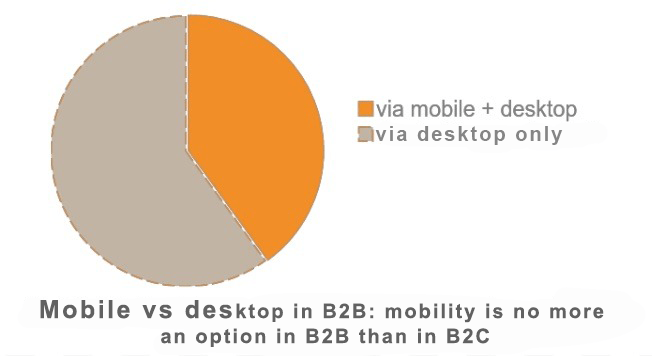
PRICE MANAGEMENT, CONTRACTS WITH COMMITMENT
Price management is probably one of the most important differentiators between B2B and B2C and potentially one of the most impactful in terms of solution choice.
Among the most significant differences, a B2B customer will potentially have their own prices per product, or even per quantity of products ordered. In addition, the prices of a product for a given customer are very often derived from prices calculated at the ERP level : the calculation of these prices is most of the time based on complex rules that cannot necessarily be reproduced in the search engines. rules of an e-Commerce platform.
In general, for customers of the wholesaler, distributor or manufacturer type, the prices are defined by contract directly between the 2 parties and thus give rise to complex calculations, back discounts, etc.
B2B and B2C, on the other hand, both use price management according to the customer’s membership of a group.
THE PROMOTIONS
It is important to consider “catalog” promotions very differently from “basket” promotions.
“Catalog” promotions are presented and visible independently of the content of the user’s basket, unlike “basket” promotions which are totally dependent on the content of the user’s basket.
Although less used in B2B, “basket” promotions do not pose the same concerns as “catalog” promotions in terms of performance. Indeed, one of the main principles of an e-Commerce site is to be able to present the connected Internet user with the list of products with the price reserved for the Internet user : the price specifically negotiated for this customer, possibly reduced by promotion that may apply.
When in B2C for a given product we have a single price (or a few if we manage customer groups) which can be the subject of some promotions, in B2B we can have as many prices as there are customers to which are added the discounts due to any promotions.
THE CONCEPT OF ASSORTMENT, CUSTOMER CATALOG
Product catalog management is another major differentiator between B2B and B2C. Indeed, in most cases, in B2C, a single customer catalog is used on a given site (possibly with a few categories specific to certain customer groups).
Conversely, in B2B, it is relatively common for the catalogs presented to vary completely from one customer group to another, or even from one customer to another. Indeed, access to certain products is sometimes negotiated with customers, as is the price of these products.
SOURCE
FEVAD 2021 report (Key figures)
https://fr.statista.com/statistiques/786016/share-of-e-commerce-in-the-sales-b2b-france/
